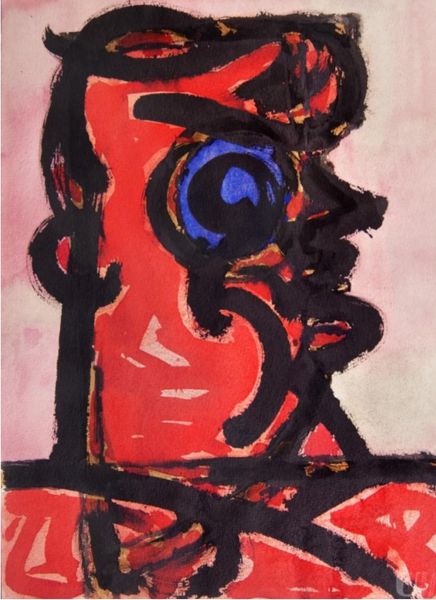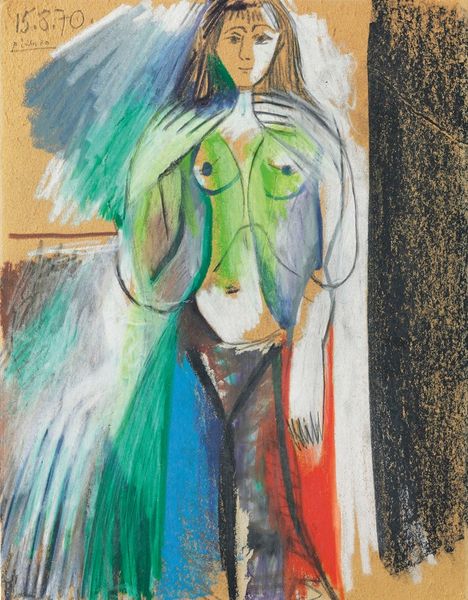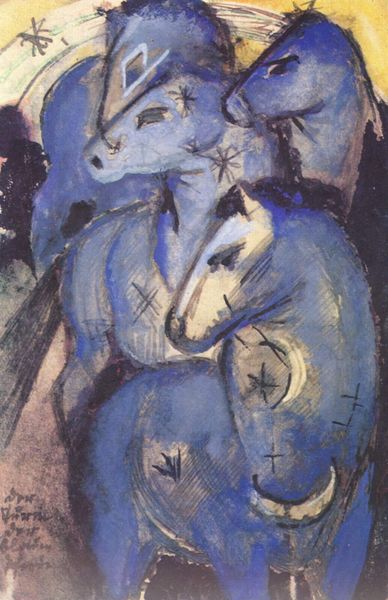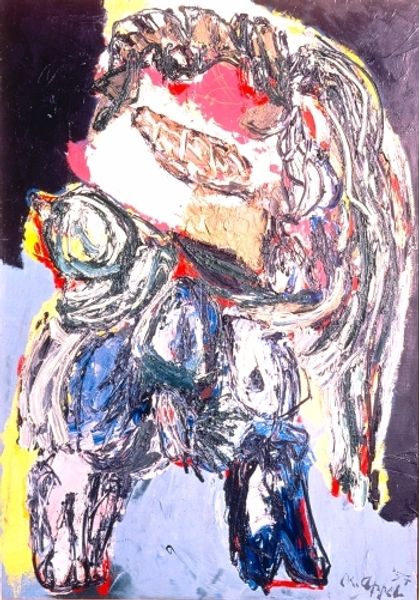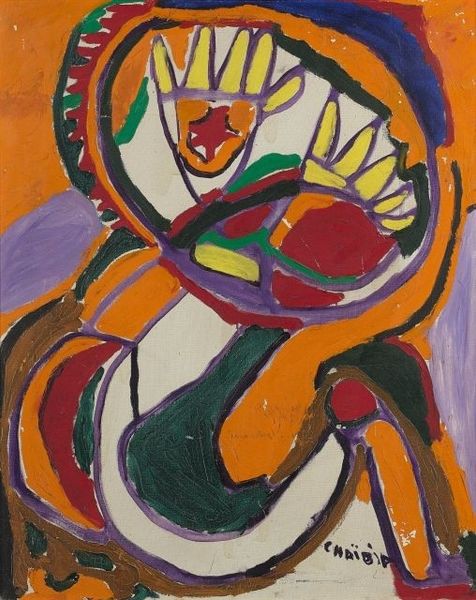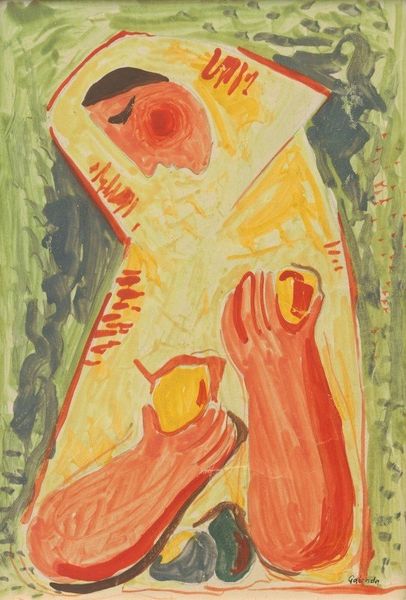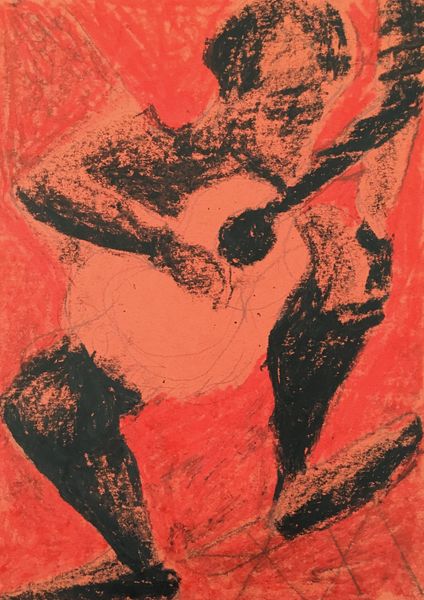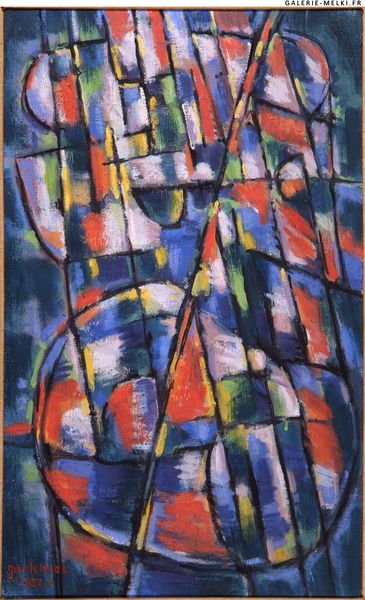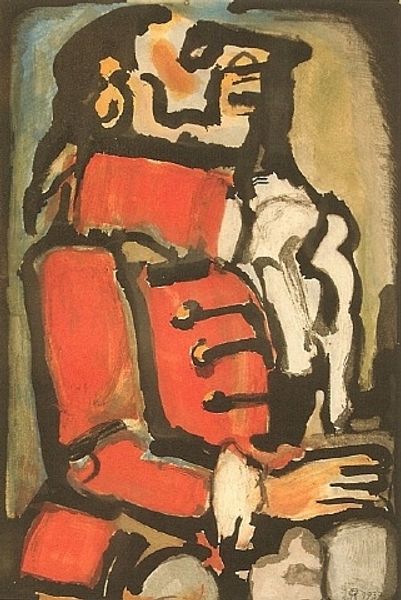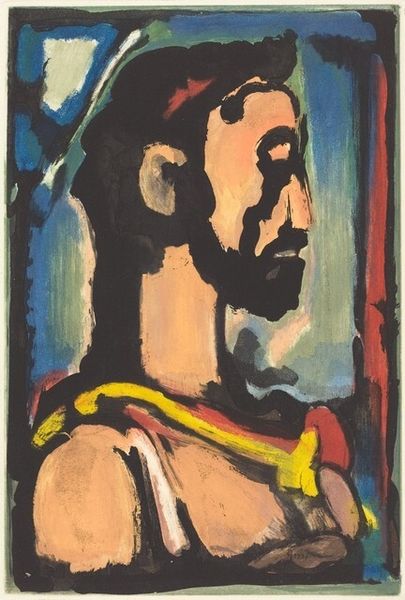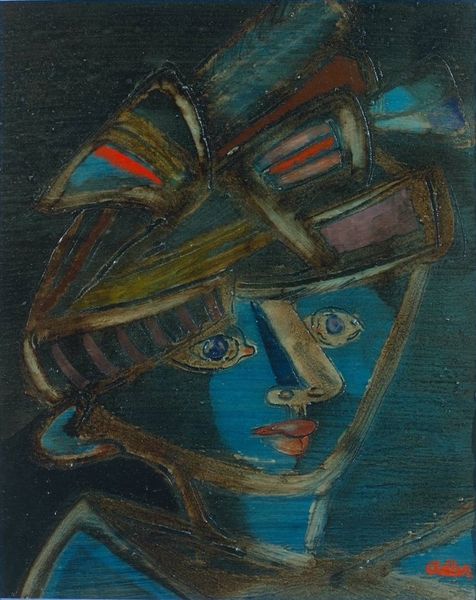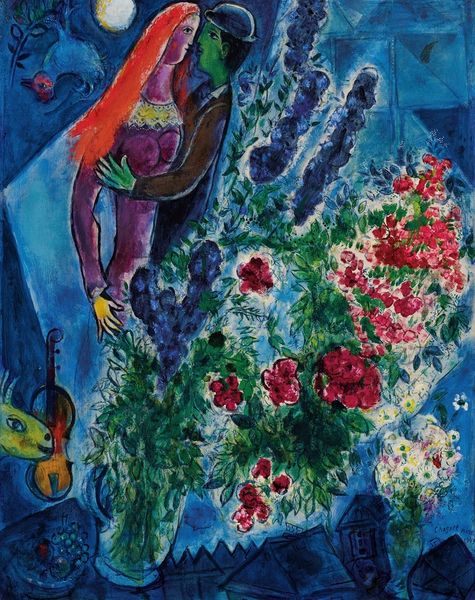
#
portrait
#
abstract expressionism
#
abstract painting
#
fluid art
#
neo expressionist
#
male-portraits
#
acrylic on canvas
#
facial portrait
#
chaotic composition
#
portrait art
#
expressionist
#
digital portrait
Dimensions: 75 x 40 cm
Copyright: Public domain US
Curator: Raoul Dufy's "The Neapolitan Fisherman," painted in 1914, immediately strikes you with its bold palette. What's your initial feeling encountering this portrait? Editor: Intense. He’s glowing almost. That orange is vibrant and jarring. And those wild, brushy strokes! It’s like the painting is pulsating with the rhythm of the sea. Reminds me of raw energy before dawn. Curator: Dufy’s process was intriguing. He initially absorbed Fauvist ideas, but shifted away towards a unique take on cubism and even hints of impressionism later. The materials used are also quite revealing – oil paint, applied with visible, expressive brushstrokes, and then there is the question: Why Neapolitan, why this moment in Italy for Dufy? Editor: Italy was a magnet. Sunlight, culture… I think this canvas is like catching the essence of a place, even a fleeting encounter. A fisherman with his catch becomes an icon—powerful posture, resilient. The fish looks so still, a captured light. Maybe it’s Dufy capturing not just what's there but a mood, an almost dreamlike state? Curator: Dreams, indeed. Considering the context, though, Dufy would have been interacting with the labor associated with the fishing industry in Naples, witnessing the day-to-day realities that fueled the economy and cultural landscape. Do you think that resonates despite its stylised nature? Editor: Absolutely. It transcends mere documentation; Dufy imbues him with this iconic stature, with a hint of something noble, doesn’t he? Almost like a statue—eternalized, his labor sanctified by art, like an earthy Saint? Curator: That touches on the commodification aspect, even. It highlights the artist's selective interpretation of his subject, blurring the lines between genuine portrayal and constructed representation – not as an attack, of course, but as a commentary on the power dynamic and who does the looking in early twentieth-century society. Editor: Food for thought. So the fiery color and bold lines were more than a celebration, also, maybe, a subtle examination of the industry behind them. What a painting, holding its catch and looking back at us now! Curator: And on the artist himself, the hands, and what that means to a whole society. Editor: Yeah, it shows there are countless ways of reading just a painting and asking so many questions about how our past got painted up, in a colourful view.
Comments
No comments
Be the first to comment and join the conversation on the ultimate creative platform.
